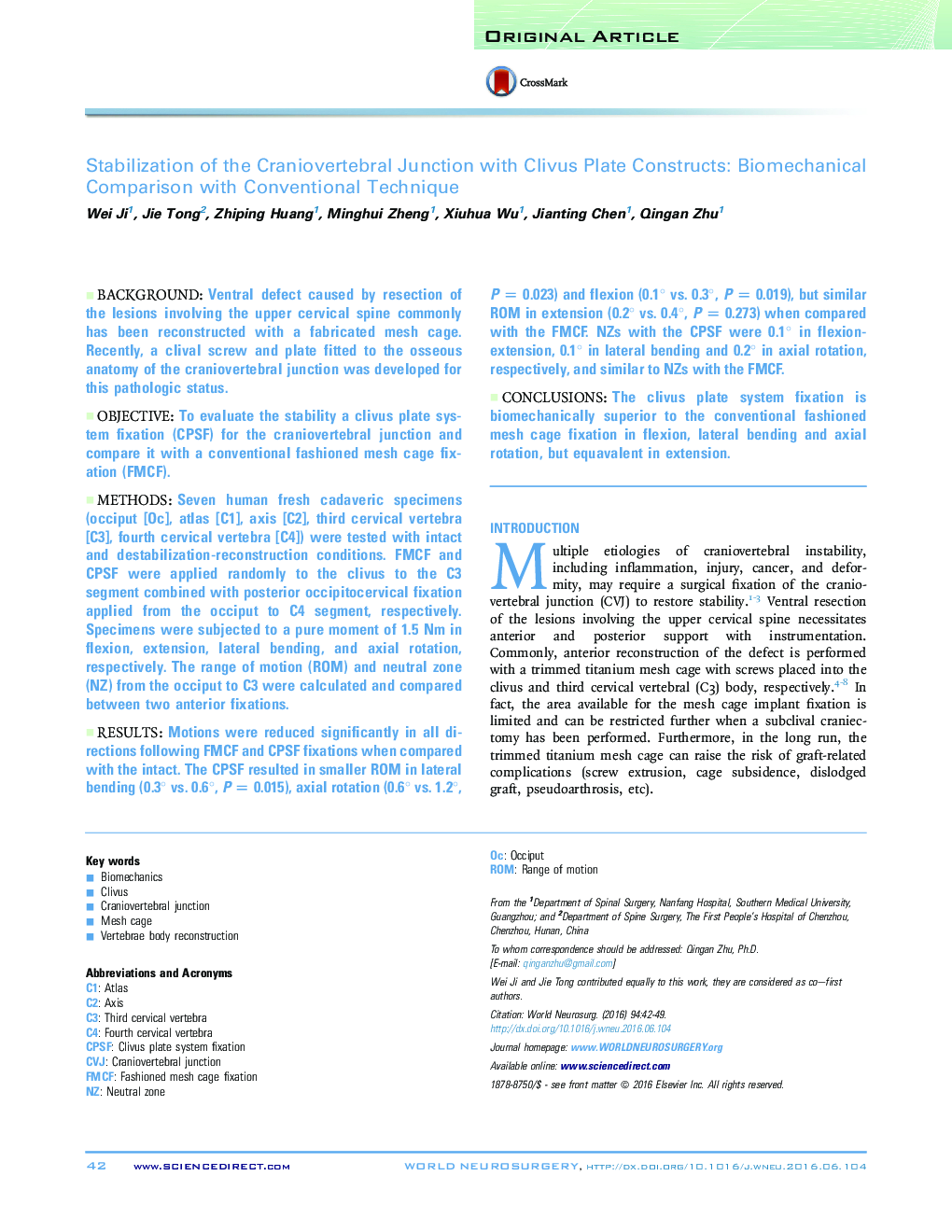| کد مقاله | کد نشریه | سال انتشار | مقاله انگلیسی | نسخه تمام متن |
|---|---|---|---|---|
| 3094585 | 1581461 | 2016 | 8 صفحه PDF | دانلود رایگان |

BackgroundVentral defect caused by resection of the lesions involving the upper cervical spine commonly has been reconstructed with a fabricated mesh cage. Recently, a clival screw and plate fitted to the osseous anatomy of the craniovertebral junction was developed for this pathologic status.ObjectiveTo evaluate the stability a clivus plate system fixation (CPSF) for the craniovertebral junction and compare it with a conventional fashioned mesh cage fixation (FMCF).MethodsSeven human fresh cadaveric specimens (occiput [Oc], atlas [C1], axis [C2], third cervical vertebra [C3], fourth cervical vertebra [C4]) were tested with intact and destabilization-reconstruction conditions. FMCF and CPSF were applied randomly to the clivus to the C3 segment combined with posterior occipitocervical fixation applied from the occiput to C4 segment, respectively. Specimens were subjected to a pure moment of 1.5 Nm in flexion, extension, lateral bending, and axial rotation, respectively. The range of motion (ROM) and neutral zone (NZ) from the occiput to C3 were calculated and compared between two anterior fixations.ResultsMotions were reduced significantly in all directions following FMCF and CPSF fixations when compared with the intact. The CPSF resulted in smaller ROM in lateral bending (0.3° vs. 0.6°, P = 0.015), axial rotation (0.6° vs. 1.2°, P = 0.023) and flexion (0.1° vs. 0.3°, P = 0.019), but similar ROM in extension (0.2° vs. 0.4°, P = 0.273) when compared with the FMCF. NZs with the CPSF were 0.1° in flexion-extension, 0.1° in lateral bending and 0.2° in axial rotation, respectively, and similar to NZs with the FMCF.ConclusionsThe clivus plate system fixation is biomechanically superior to the conventional fashioned mesh cage fixation in flexion, lateral bending and axial rotation, but equavalent in extension.
Journal: World Neurosurgery - Volume 94, October 2016, Pages 42–49